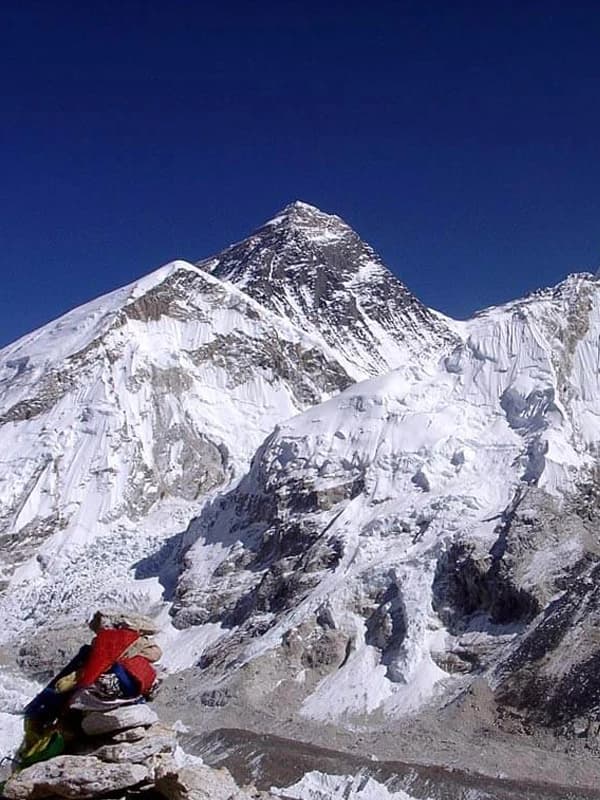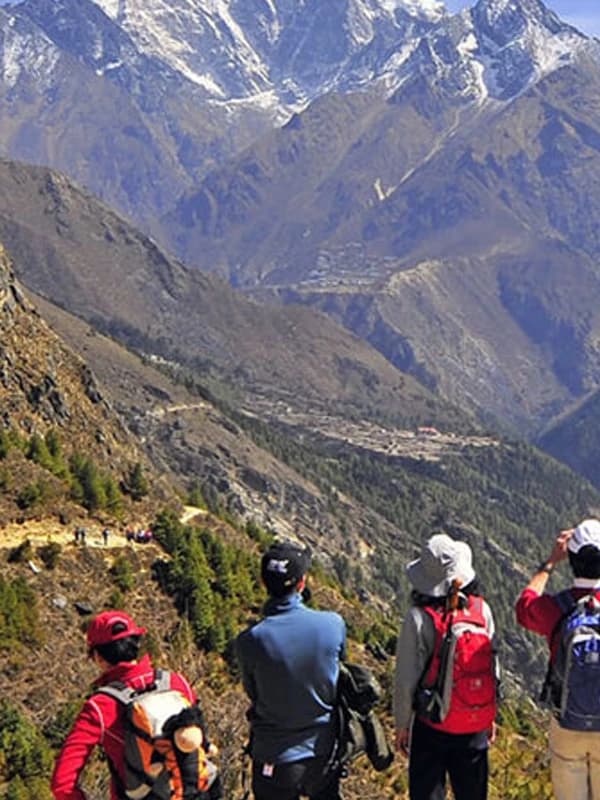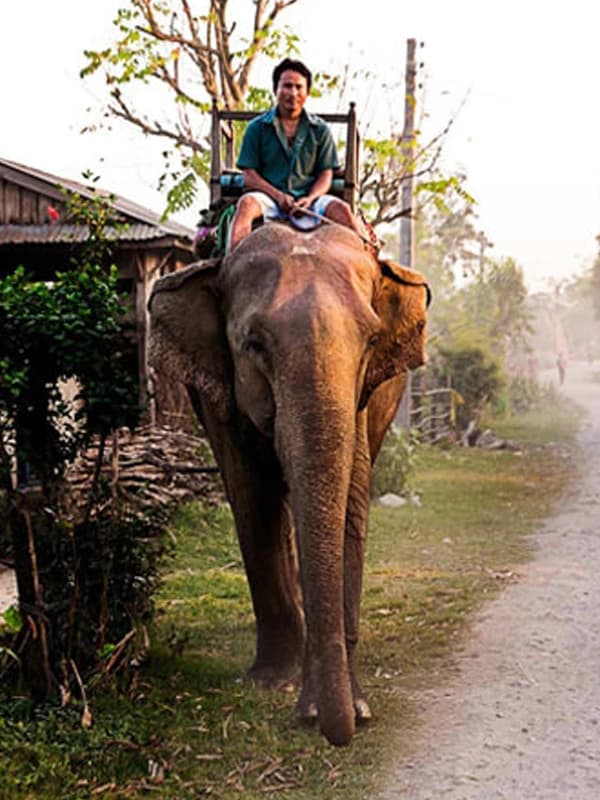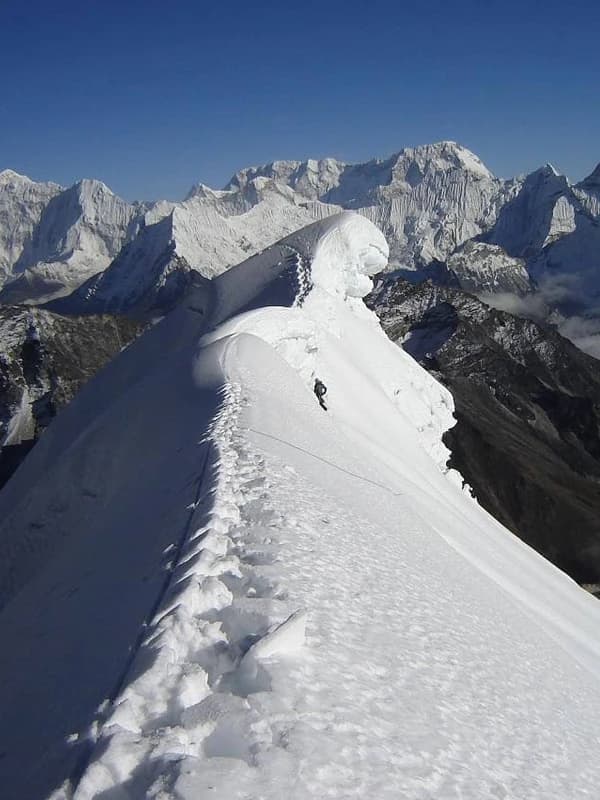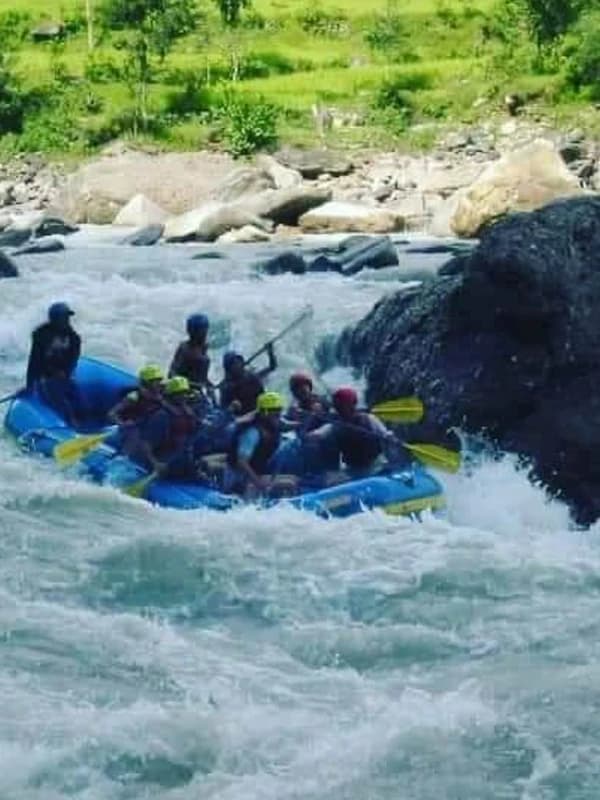NEPAL
✔ Official Name: Federal Democratic Republic of Nepal
Area: 147,516 sq km
✔ Geography: Nepal is a landlocked country located between China, in the North, and India in East, West and South. Highest point Mt. Everest (8,848.86m) and lowest Kechana (60m above sea level)
✔ Capital: Kathmandu is the capital city of Nepal. Kathmandu is a valley surrounded by four hills – Fulchowki, Chandragiri, Shivapuri and Nagarjun. Kathmandu valley has three major cities Kathmandu, Bhaktapur, Patan. Situated at the altitude of 4,500 feet above sea level, Kathmandu is home to seven UNESCO World Heritage sites. Before the unification of Nepal in the 18th Century, the three cities were independent states ruled by the Malla kings.
✔ Population: 29.3 million (according to the census of 2010)
Language: Nepali is the national language. However, people speak Newari, Bhiojpuri, and Maithali among others as their mother tongue. People in the urban areas understand English quite well.
✔ Climate: Nepal has four seasons, namely, 1. winter (Dec-Feb), 2. Spring (June-Aug), 4.Autumn (Sep-Nov). Nepal can be visited round the year.
✔ Political system: Multi-party system of Democracy
✔ People\religion: Nepal had more than 105 ethnic groups with diverse culture, traditions and lifestyle. Nepali people can be divided into two distinct groups: Indo-Burman and Mongoloid. Nepal is a secular state with majority of people following Hinduism. However, people practicing Buddhism, Christianity and Islam among others live in a good harmony.
✔ Administrative Division: Though Nepal is a federal republic, federal states are yet to be carved. Nepal is divided into 7 provinces, 14 Zones and 77 Districts.
✔ Geographical Division: Geographically, Nepal is divided into Hills, Mountain and Terai regions.
✔ Entry Procedures
All foreigners, except the Indians, need to have a valid passport and a visa to enter Nepal. Visas can be availed from Nepali diplomatic missions and consular offices station abroad or upon arrival at Tribhuvan International Airport and other entry points.
Trekking in Nepal
Nepal, well-known as the country of Mount Everest and birthplace of Lord Buddha is located in the Himalayas and bordered to the North by China, and to the south, east, and west by India. Its total land area is 147,516 sq. Kilometers with geographical coordinates 28°00’N 84°00’E. Nepal falls in the temperate zone north of the Tropic of Cancer. It comprises of 3 basic regions- Mountainous, Hilly and Plain. UNESCO has enlisted many places in Nepal as World’s Cultural and Natural Heritages.
If you are planning for an adventurous travel destination, Nepal can be your choice. If you are thinking of majestic and relaxed places to be together with your family, it can be Nepal again. But, if you are thinking great Himalayan experience, it only Nepal the trails of Nepal that take you closet to the Himalayas. Nepal is the ultimate holiday destination for all people wishing for various life-time events. Major tourist events include wilderness and exploration activities such as Mountain biking, Bungy Jumping, rock climbing, mountain climbing, trekking, bird watching, Mountain flights, paragliding, exploring the waterways by raft, kayak or canoe and jungle safaris especially in the Terai region.
Travelling around Nepal is a dream to many people who wish to see the mountains from closest view. It possesses 8 out of the 10 Highest Peaks in the world. Also, it has been attracting tourists, researchers and photographers who desire to see the culture and tradition of people, religious sites and different world heritages.
Trekking is one of the best events that invite majority of the tourists in Nepal. It has numerous trekking trails which require 1-2 days to months of time. Some of adventurous and challenging trails include Annapurna region , Annapurna circuit, Annapurna base camp trek , Annapurna view trek, Everest region trek, Everest base camp trek, Everest view trek, Everest Gokyo trek , Everest Cho- La pass trek, Langtang region trek, mustang trek, Dolpo trek, Manaslu trek, Kanchanjunga trek etc. Tourists can also experience villages tour trekking, home stay trekking and trekking around the Kathmandu valley which takes 1 or 2 days to complete.
Trekking in Nepal Best Time of Year
September to March is the best season for trekking in Nepal. During October and November, the season is often dry and warm and overwhelming mountainranges can be viewed. Even though the weather is relatively chilly at high altitudes,December to February is still considered as a good period for trekking. March,April and May offer better weather for the trekkers during which the trails aresurrounded by superb wild flowers and fascinating rhododendron forests. During monsoon (June to August ) also, trekking is possible in shadow areas of north inthe Himalayan like Annapurna circuit, Manang valley, Dolpo, Mustang etc. Sincerain clouds cannot reach these regions because of the high mountains, they do notexperience rainfall throughout these months.
Based on system and methods, there are two common trekking styles in Nepal- Tea house trek and camping trek.
Tea House Trek:
In this style, overnight stays and meals services are taken from the tea house and lodge during the trip. Together with you will be the porters to carry thebaggage and equipment and a guide to show you the trail. The popular routes for teahouse include Annapurna, Langtang and Everest region.
The Camping Trek:
This is another style in which all food and camping equipment are carried together with the team of guides, cooks and porters who also take care of all the logistical details, camp set-ups and prepare delicious meals. These arrangements can be on behalf of an individual or group customers.
Expedition in Nepal
Trekking Guide Team Adventure has been dedicated to provide the best services for adventure enthusiasts in the Himalayas since 2009. We have designed our adventurous mountain expeditions to take you on uncrowded routes and to exotic destinations providing the opportunity to explore unique cultures & scenery. Our expedition meaning is that our trips are designed for everyone and our clients belong to all age groups and levels of experience. Usually, we take fewer people in our groups allowing for flexibility and attention to personal interests. Our staff are well trained, experienced and earned the reputation as the best in the field. They possess the professional expertise to handle your individual needs of the clients. Our top class trekking gear ensures a pleasant and enjoyable trip for you. We are equally aware of environmental issues in all our trips. We firmly believe that protecting environment and preserving native culture are the fundamental aspects to be considered in all treks. We are dedicated to minimizing our presence in nature and native culture as far as possible while trekking, whilst ensuring that your trekking experience will be the adventure of a lifetime.
Tour in Nepal
Nepal, the country of 4 castes and 36 sub-castes, is an amalgamation of numerous cultures and religions bounded by perfect harmony. Combined with natural beauty, cultural/historical sites, the history of brave Gurkhas, and friendly Nepali people, Nepal is a classic destination to learn about the unique Hindu and Buddhist culture that carries century-old history and mythologies.
From the corner of Kathmandu valley to the hills of Gorkha, Nepal screams culture, history, bravery, unity, and diversity at its best. Although there are hundreds of places to visit in Nepal, there are some local attractions that you cannot miss during your Cultural Tour in Nepal.
Adventure Activities
The unique and diverse geographical structure of Nepal is a unique playground for different intere
sting and thrilling outdoor activities. From Mountain biking in the rugged roads of remote parts, to flying freely in the sky of Pokhara, there are list of things that you cannot miss during your Nepal trip.
Jungle Safari
Nepal is a country of exceptional biodiversity and a beautiful natural environment. The tropical jungles of the Terai preserve some of the best wildlife habitat in the subcontinent. Nepal has 16 national parks, wildlife reserves and conservation areas, occupying 16 percent of its total geographical area.
For those who wish to experience the natural environment at its best there is no better place to visit than Nepal. The outdoor adventure sports into the wilderness to see wild animals, birds and natural beauty. You ride on an elephant’s back or on a four wheeler jeep accompanied by a fully trained guide (also known as expert Naturalists) for the love of nature and animals. In Nepal, Chitwan and Bardia are two hot dishes on the menu. Pick Chitwan as this is Nepal’s most popular National Park offering excellent opportunity to see Royal Bengal Tigers, One horned Rhino, crocodile and thrilling wilderness experience into its deep and thick jungle. Pick Bardia also, as this is another National Park, which offers excellent jungle safari. Here too you can ride on an elephant or a take four wheel to discover some of Nepal’s unspoiled natural habitats.
Most jungle safari consists of canoe rides on the jungle rivers, nature walks, birds watching excursions and quick tours around the villages to discover unique culture and traditions of the local village people. There are also scheduled cultural-musical programs performed by the villages, which are also in the Jungle Safari itinerary.
Nepal Peak Climbing
Nepal with its Eight Thousanders meters gigantic mountains offers expeditions to Mt. Everest south col, Mt.Kanchenjunga, Mt.Lhotse, Mt. Makalu, Mt.Cho-Oyu, Mt.Dhaulagiri, Mt.Manaslu and Mt.Annapurna I. The earliest visitors to Nepal were the mountaineers since the late 1950’s as the door was opened for the outsiders after the end of Rana regime beside major mountaineering climbing expeditions Nepal Himalaya has numerous smaller peaks from 5,500m to 6,500 meters peaks above these is counted as expeditions, trekking peaks are less costly than the major expeditions, the highest trekking peaks in Nepal Himalaya is Mera Peak at 6,654 meter situated in one of the remote isolated area of Khumbu and it is one of the least technical peak to climb, from less technical to tough technical climb we at Trekking Guide Team we have them all for your adrenaline adventure challenge, beside the Mera Peak we have the most interesting climbing to popular Island peak, Lobuche peak, Pokalde in the Khumbu region and in around Annapurna area we have Pisang peak, Chuli East and West, Tent Peak and Tharpu Chuli in the Annapurna Sanctuary.
Nepal offers varied of peaks over 5500 to 6,600m, there are more than 1,300 peaks listed by NMA (Nepal Mountaineering Associations) out of these 124 peaks have never been climbed or reach the summit, so we invite the adventurous people who have the awe for breathe taking adventure; these peaks can be climbed by any basic climber or professional mountaineer with the guides and proper equipments as per the challenge, time and duration of the climb, most of the trekking peaks are done in alpine style, the trekking peaks in Nepal are of various technical way of climbing the grading are from PD to TD s per the Swiss mountaineering grading system, please contact us for more details and information.
Trekking Peak climbing Equipment List:
| Plastic Boot. | One pairs each. |
| Crampons. | One pairs each. |
| Ice Axe. | One each. |
| Harness. | One each. |
| Carabinar. | Two each. |
| Snow Gaiter. | One pairs each. |
| Snow/Sun Glass. | One each. |
| Warm Gloves. | One pair each. |
| Wind Proof Jacket & Trouser. | One set each. |
| Down Jacket. | One each. |
| Down sleeping bags. | One each. With inner linear. |
| Main Rope: | 200m ( 50m per person) |
| Snow Bar: | 2/4 pcs depending upon group size. |
| Ski Pole (Optional) | One each. |
Rafting in Nepal
Rafting in Nepal is usually a ‘wilderness’ experience in that most rivers don’t have highway alongside them – but it’s a soft, tamed, wilderness with white beaches for camping, clean blue rivers, friendly locals. Incredibly inexpensive, Nepal is a peaceful democratic country where rafters and kayakers get a warm welcome as one of the best forms of ecotourism.
White Water Rafting in the rivers of Nepal is a memorable experience. The government has opened up 10 rivers for rafting. Among them, Sunkoshi and Karnali are ranked among the best rivers for white water rafting in the world. In these rivers, adventure seekers can arrange their own itineraries lasting for 1 day to 12 days. Rafting through varying rapids in fast flowing rivers amidst picturesque settings are some of the highlights of rafting in Nepal. Trishuli, Kali Gandaki, Bhotekoshi etc are some of the rivers popular among adventure seekers. Rafting in the rivers in Nepal is one of the best ways to explore the typical cross section of natural as well as cultural heritage of the country. One can glide on waters with magnificent scenery all around or rush through roaring white rapids.

